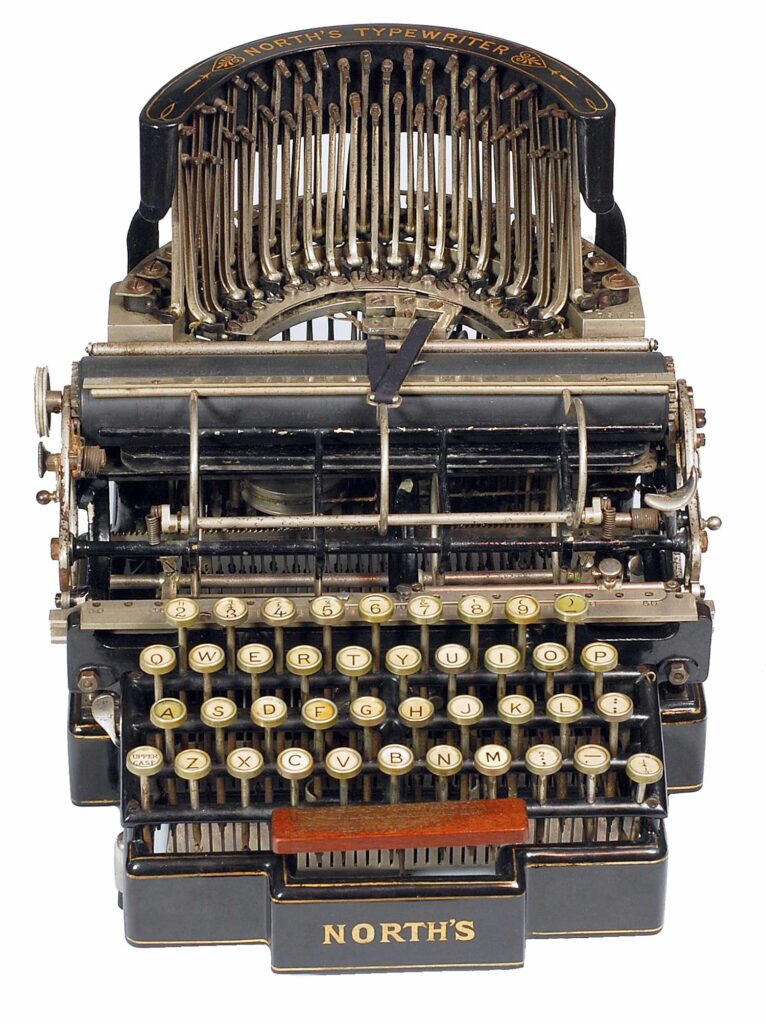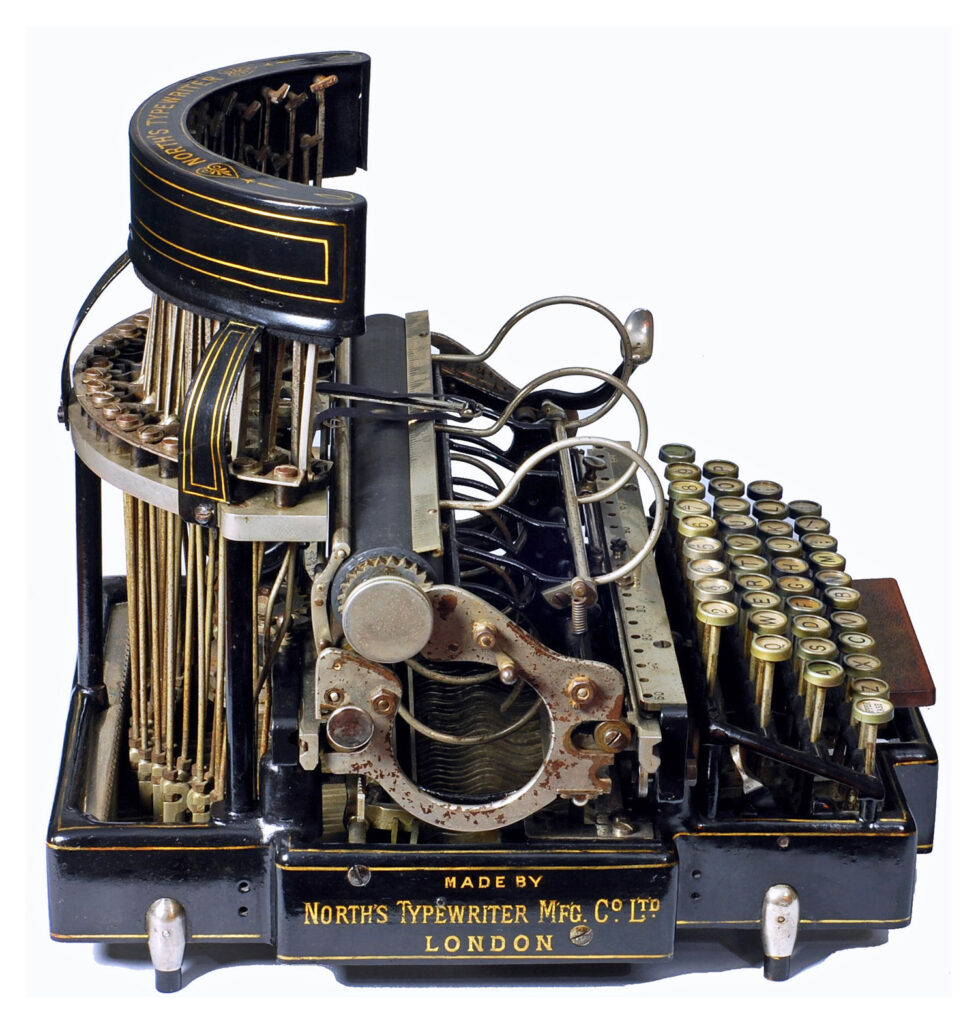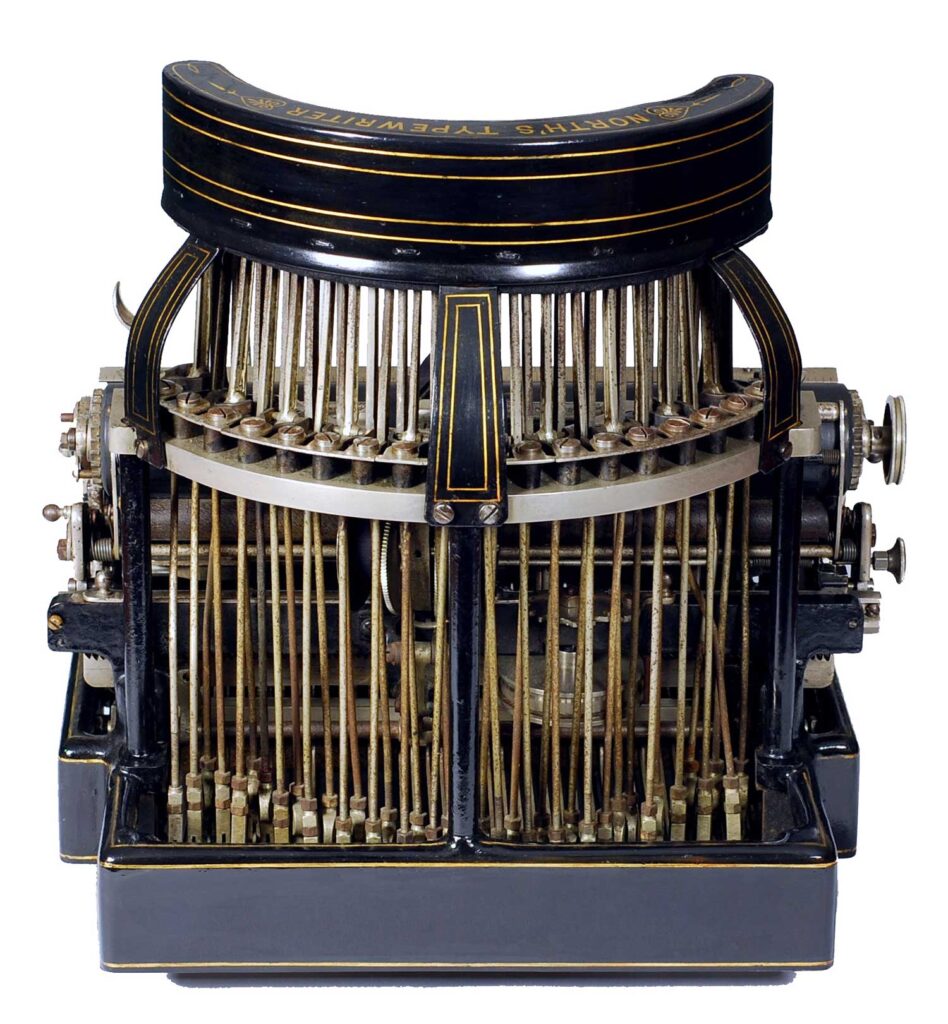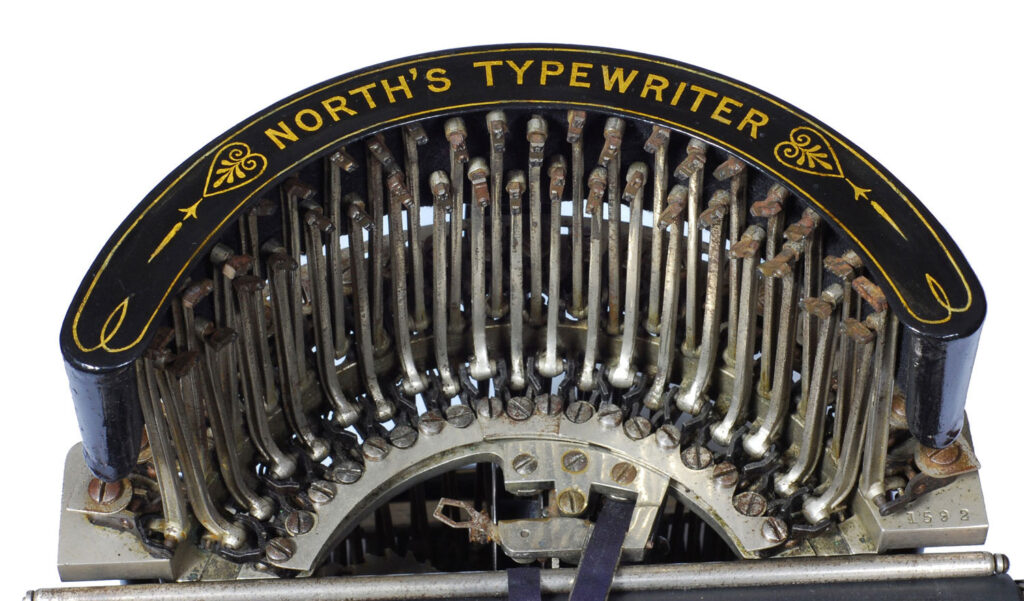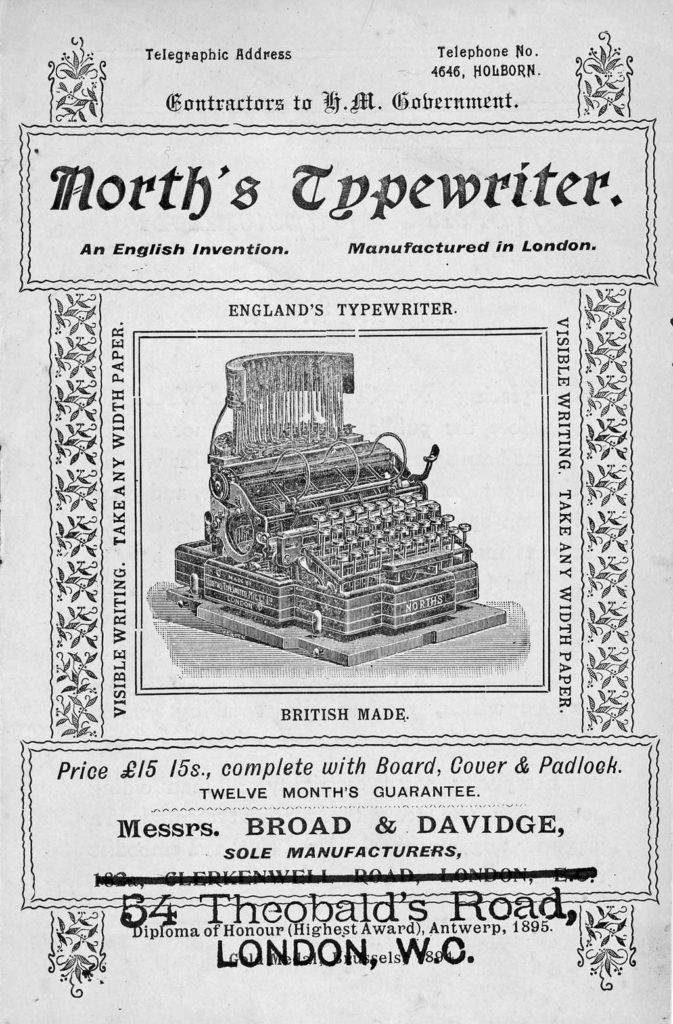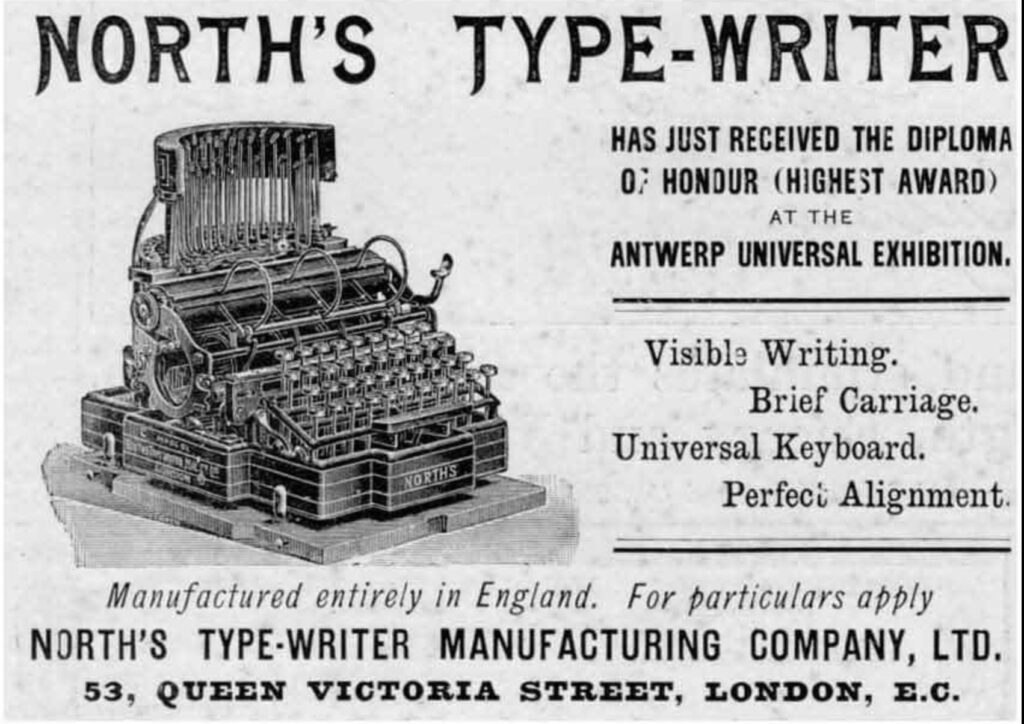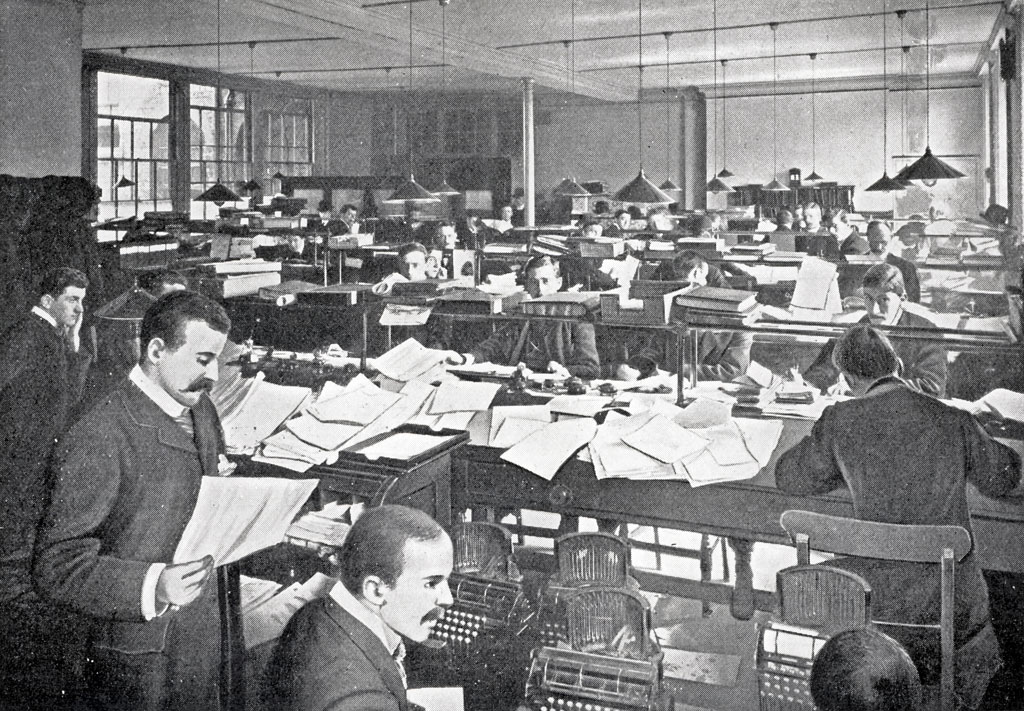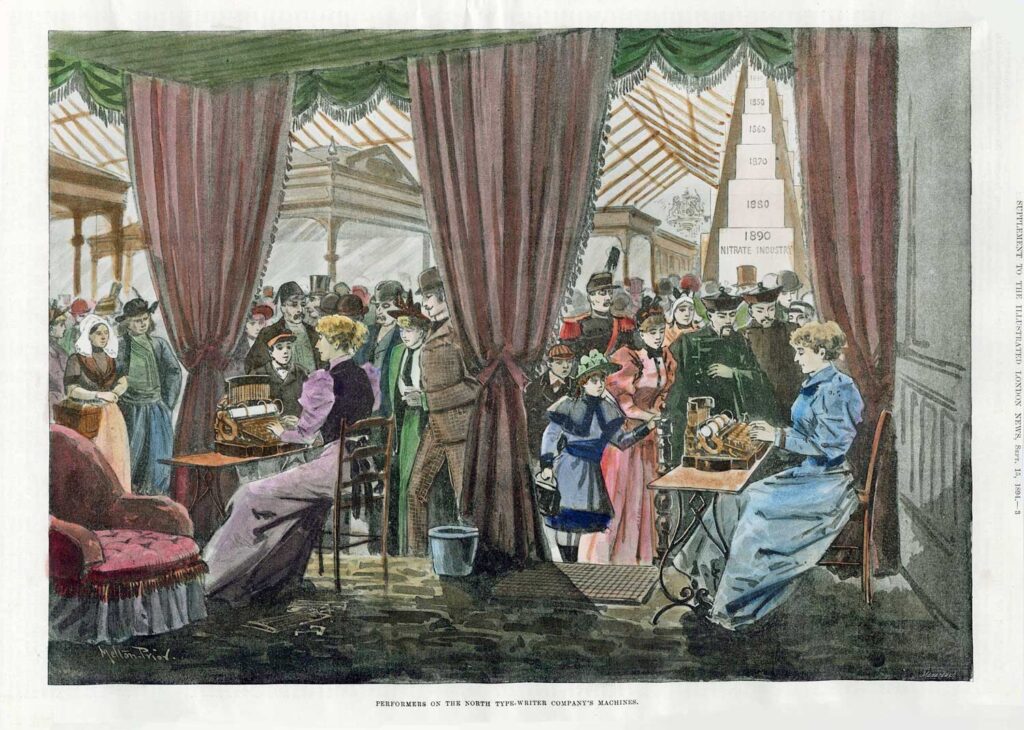The North’s typewriter features the rare design of having its typebars stand vertically behind the carriage. This allows for visible typing, as the typebars swing down to strike the top of the platen. However, this configuration complicates paper handling and requires two holding ‘baskets’, one above the other in front of the carriage. Before typing, paper is pre-loaded into the upper basket. As one types, the paper feeds up, over, and around the back of the platen, eventually curling into the lower basket. Visible typing was thus achieved, but only a few lines could be seen before the paper advanced out of view.
The typewriter takes its name from Lord North, who purchased the factory where the English typewriter had been made in 1890. He financed the development of the North’s typewriter, which debuted in 1892.
Only four typewriters were made with this behind the carriage configuration of type bars and those were, in addition to the North’s, the Waverley, Fitch and the Brooks.
The charming illustration below, from the Illustrated London News of 1894, shows “performers on the North type-writer” at an exposition.
The North’s originally sold for nearly £16, the equivalent of about £1,500 today.
“In placing the North’s Type-Writer before the public neither time nor money has been spared to produce a machine worthy of the reputation of English mechanics.”

